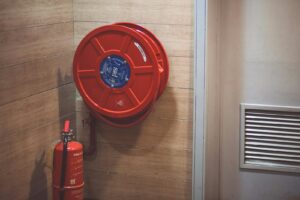Essential Winter Safety Tips to Avoid Slips and Falls

Winter might bring festive joy and picturesque snow-covered landscapes, but it also presents a challenge for many of us. The risk of slips and falls increases dramatically, especially for elderly family members and young children. In fact, according to the UK’s Health and Safety Executive, slippery surfaces account for a significant proportion of accidents during the winter months. But fear not! With some preparation, you can safeguard your home and loved ones. This guide will provide practical tips and compassionate advice to help you create a safer environment this winter.
Understanding the Risks
Slippery paths, icy driveways, and wet floors can turn any winter wonderland into a hazard zone. Accidental slips can lead to serious injuries, particularly for those with mobility issues. Understanding these risks is the first step in preventing them. The Royal Society for the Prevention of Accidents (RoSPA) highlights that falls are one of the most common causes of hospital admissions during winter, particularly affecting the elderly.
Identifying Hazardous Areas
Before winter fully sets in, take a walk around your property. Identify areas that are likely to become slippery or icy, such as pathways, steps, and driveways. Pay special attention to places where water tends to accumulate. Being proactive and prepared helps mitigate risks before they occur.
Investing in Quality Winter Footwear
One of the simplest ways to prevent slips and falls is to ensure everyone in the household has appropriate footwear. Sturdy, non-slip boots with good tread can significantly reduce the risk of slipping on icy surfaces. Look for boots that offer insulation to keep feet warm and dry, further reducing the risk of accidents.
Safe Use of De-Icing Products
Using de-icing products like salt or grit is an effective way to manage icy surfaces. Salt lowers the freezing point of water, helping to melt ice and prevent its formation. For best results, apply it early in the morning or late at night when temperatures are lowest. Remember to store these products safely, away from children and pets.
Installing Handrails for Support
Handrails provide critical support for those with mobility challenges. Consider installing them alongside steps and ramps to offer additional stability. Ensure they are sturdy and well-maintained, as they can be a lifesaver in slippery conditions.
Keeping Walkways Clear
Regularly clearing pathways of snow and debris is crucial. Shovels and snow blowers are essential tools for this task. Shovel snow as soon as it falls to prevent it from compacting into ice. When using a snow blower, follow safety instructions to avoid injury.
Selecting the Right Outdoor Mats
Outdoor mats with a rougher texture can provide additional traction for those entering your home. Choose mats made from materials that can withstand wet conditions without becoming slippery themselves. Place them at entrances to capture snow and water from shoes.
The Importance of Indoor Safety
Winter hazards aren’t just outside. Wet floors from rain and snow can make indoor areas just as dangerous. Use absorbent mats at all doorways and encourage family members to remove wet shoes immediately upon entering to keep indoor surfaces dry.
Educating Family Members
Educating your family about the risks and how to mitigate them is key. Ensure everyone understands the importance of moving cautiously outdoors and wearing appropriate footwear. Older children can be encouraged to help younger siblings and elderly relatives.
Considering Mobility Aids
For those with significant mobility issues, mobility scooters or wheelchairs may be necessary. However, these devices need special care during winter. Equip them with snow- and ice-appropriate tyres for better traction, and use protective covers to shield them from moisture and freezing temperatures. Taking these precautions ensures safety and enhances the usability of mobility aids during harsh weather conditions.
Creating a Winter Safety Kit
Prepare a winter safety kit containing essentials such as a flashlight, batteries, a first-aid kit, and emergency contact numbers. Knowing these items are readily available can provide peace of mind during the colder months.
Encouragement and Empathy
It’s important to approach winter safety with empathy. Encourage open dialogue with your elderly relatives, offering support and understanding. Assure them that taking precautions doesn’t limit independence but enhances it.
Staying Informed and Prepared
Staying informed about weather conditions is vital. Regularly check forecasts and prepare for severe weather events. Sign up for local alerts to receive timely updates and advice.
Reflecting on Your Safety Practices
Reviewing and improving your safety practices is an ongoing process. After each winter, evaluate what worked and what didn’t. Make adjustments as necessary to ensure your household remains secure year after year.
Conclusion
With preparation and a focus on safety, you can enjoy the beauty of winter without worrying about the risk of slips and falls. By taking proactive steps, you protect not only yourself but also those you care about most!
Image Source: Unsplash





